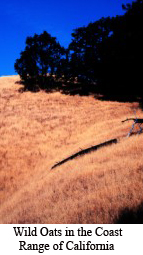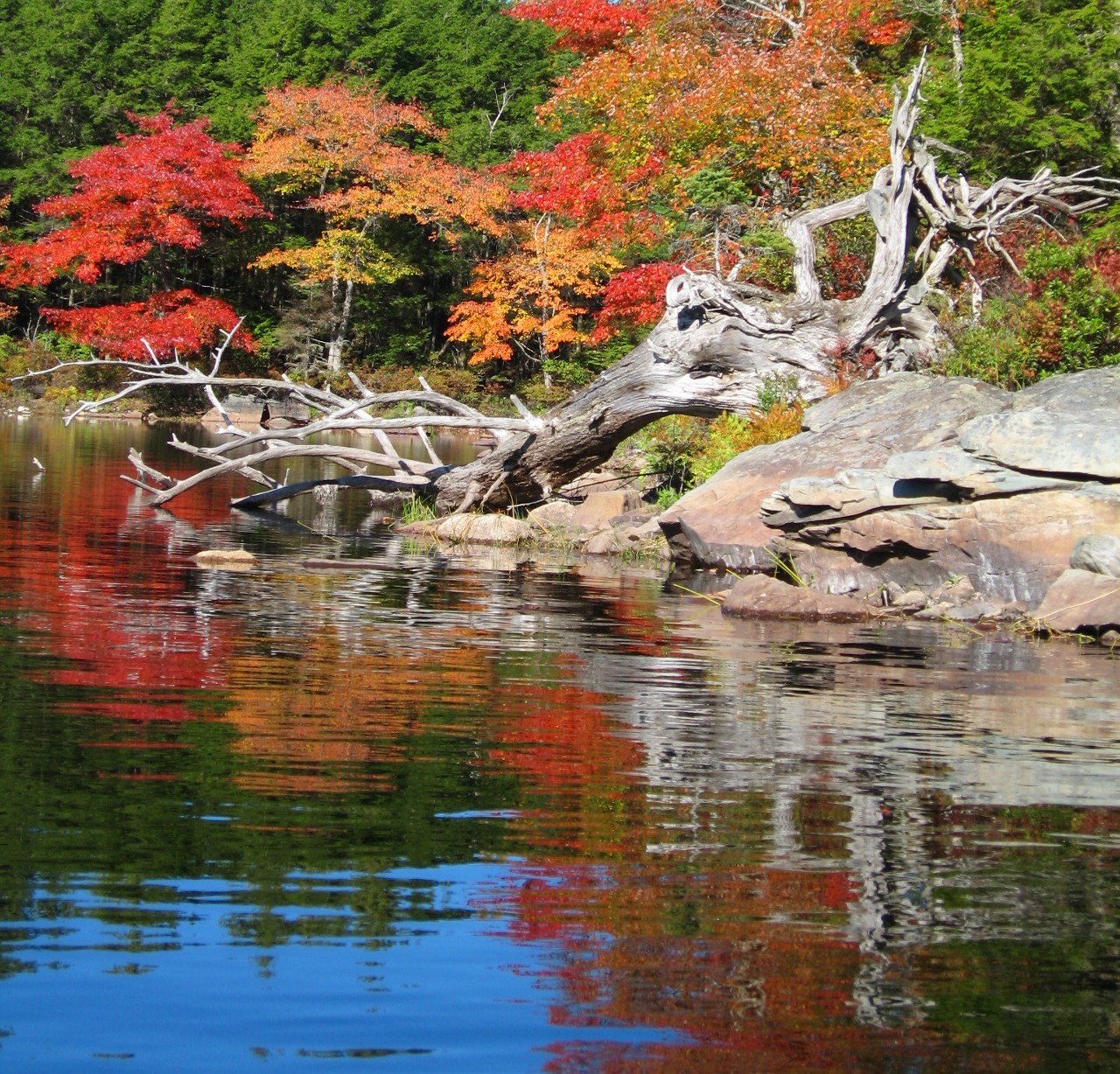Robert Latta
 |
ASSOCIATE PROFESSOR MSc (Toronto), PhD (Colorado) |
||||
| Teaching & Research Ecology, Evolution and Genetics of Plants, Stream A, Avena, Ponderosa Pine, Gene Flow, Hybridization, Local Adaptation, Evolutionary Trade-off, Population Ecology, Botany, Ecological Genetics.
In earlier work, I would analyze the geographical distribution of genetic variation, and test it against various theories about the history and ecology of the populations to try to infer which theory best fit pattern. For the last decade though, my lab has focussed on a more experimental system. We are studying the inheritance of characters in a cross between two populations of an annual grass (Slender Wild Oat Avena barbata). These populations are genetically different, and come from contrasting habitats (wet and dry). One of my graduate students created a genetic map of this cross, and we have conduct a variety of greenhouse and field experiments to measure the genetic variation in ecological traits (growth, survival, reproduction etc) among the recombining progeny of the cross. By relating the measures of ecological performance in each line to the genetic markers in the line, we can map out the genomic regions that contain genes that associate with this performance and that are thus under selection (Gardner and Latta, 2006; Latta and Gardner, 2009).We can also use this cross as a window into the effects of hybridization on evolutionary adaptation. By 'mixing and matching' the traits of the two parents, hybrid recombinants produce a rich pool of genetic variation from which selection can shape adaptations to novel conditions (Johansen-Morris and Latta, 2006, 2008). The striking result so far, is that selection seems to favour the same genotypes across both the wet and dry habitats from which the original parents of the cross came. This suggests that one type can be well adapted to both habitat types, and raises the question: Why are there different genetic types in the two habitats? The prediction is that one type – a new recombinant of the parents – should be spreading by natural selection. To test this prediction would require data on what genotypes were present in these populations in the past – fortunately we have exactly that information from the original studies done by Robert Allard in the 1970's that first described the association between genotype and habitat. So our current focus is to compare the present day populations to the past to determine the genetic responses to present day natural selection in wild populations. For more info see: http://myweb.dal.ca/rglatta/
|
|||||
Examples of Students' Research Topics
Honors BSc Students
- Jacob Pollack, Mack Bartlett - Selection on differential pollen viability.

- Chris McCain - Analyzing the causal pathways of natural selection in the lab and in the field.
- Will Stymiest - Are methylation sensitive AFLP genetic markers restricting genetic map coverage in slender wild oats?
- David Staples - Mapping epistatically interacting genes affecting fitness in slender wild oats..
Graduate Students
- PhD. Joey Johansen - The genetic basis of hybrid vigour and hybrid breakdown
- PhD. Kyle Gardner - AFLP mapping of genes underlying ecological traits in Slender Wild Oats
- PhD. Kate Crosby - Contemporary evolution as Avena barbata colonized California from the Mediterranean Basin.
- Visiting Postdoctoral Fellow, Eastern Cereal and Oilseed Research Center, Agriculture Canada
- Genetic Cousellor
- PhD Student University College Dublin
- Dalhousie Medical School
- GIS analysis SWAP lab, University of Victoria
- Capital District Health Authority.
Avena barbata:
Latta, R.G., A.D. Johansen and K.M. Gardner. 2007. Hybridization, recombination, and the genetic basis of fitness variation across environments in Avena barbata. Genetica 129:167-177. (A general overview of our work on the A. barbata system).
Gardner, K.M. and R. G. Latta. 2006. Identifying the targets of selection across contrasting environments in Avena barbata using Quantitative trait locus mapping. Molecular Ecology 15: 1321-1333
Johansen-Morris, A.D. and R.G. Latta. 2006. Fitness consequences of hybridization between ecotypes of Avena barbata: Hybrid breakdown, hybrid vigour and transgressive segregation. Evolution 60:1585-1595.
Johansen-Morris, A.D. and R.G. Latta. 2008. Genotype by environment interactions for fitness in hybrid genotypes of Avena barbata. Evolution 62:573-585
Latta, R.G. 2009. Testing for local adaptation in Avena barbata, a classic example of ecotypic divergence identified with electrophoretic techniques. Molecular Ecology 18: 3781-3791.
Latta, R.G. and C. McCain. 2009. Path analysis of natural selection via survival and fecundity across contrasting environments in Avena barbata. Journal of Evolutionary Biology 22: 2458–2469.
Latta, R. G., K.M. Gardner and D. Staples. 2010. Quantitative trait locus mapping of genes under selection across multiple years and sites in avena barbata: Epistasis, pleiotropy, and genotype by environment interactions. Genetics 185: 375–385
Theory and Reviews:
Latta, R.G. 1998. Differentiation of allelic frequencies at quantitative trait loci affecting locally adaptive traits. American Naturalist, 151:283-292.
McKay, J.K. and R.G. Latta. 2002. Adaptive population divergence : markers, QTL and traits. Trends in Ecology and Evolution, 17: 285-291.
Gardner, K.M. and R.G. Latta. 2007. Shared quantitative trait loci underlying the genetic correlation between continuous traits. Molecular Ecology 16:4195-4209
Latta, R.G. 2008. Conservation genetics as applied evolution: from genetic pattern to evolutionary process. Evolutionary Applications 1:84-94.
Older Work on Pines:
Latta, R.G. and J.B. Mitton. 1997. A comparison of population differentiation across four classes of gene marker in limber pine (Pinus flexilis, James). Genetics, 146:1153-1163.
Latta, R.G. 1998. Differentiation of allelic frequencies at quantitative trait loci affecting locally adaptive traits. American Naturalist, 151:283-292.
Latta, R.G., Y.B. Linhart, D. Fleck and M. Elliot. 1998. Direct and indirect estimates of seed vs pollen movement within a population of ponderosa pine. Evolution, 52:61-67.
Latta, R.G., and J.B. Mitton. 1999 Historical separation and present gene flow through a zone of secondary contact in ponderosa pine. Evolution, 53:769-776.

 want to understand the nature and the process of adaptation in present day natural populations. Questions that motivate this research are: "Is adaptive evolution taking place in the present?" "Are there limits to how well adapted an organism can be?" and "Do different habitats select for different adaptations within populations of the same species?".
want to understand the nature and the process of adaptation in present day natural populations. Questions that motivate this research are: "Is adaptive evolution taking place in the present?" "Are there limits to how well adapted an organism can be?" and "Do different habitats select for different adaptations within populations of the same species?".